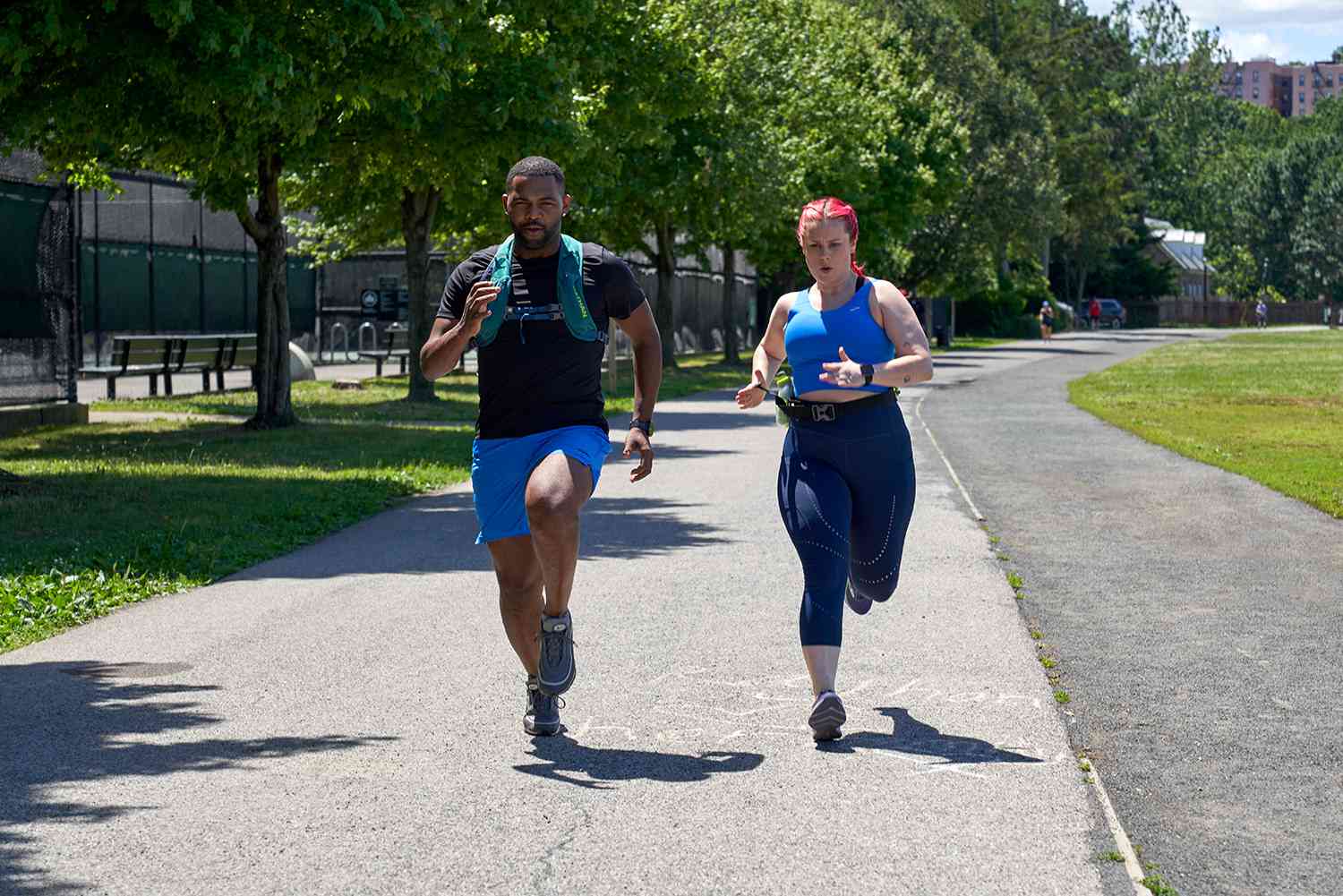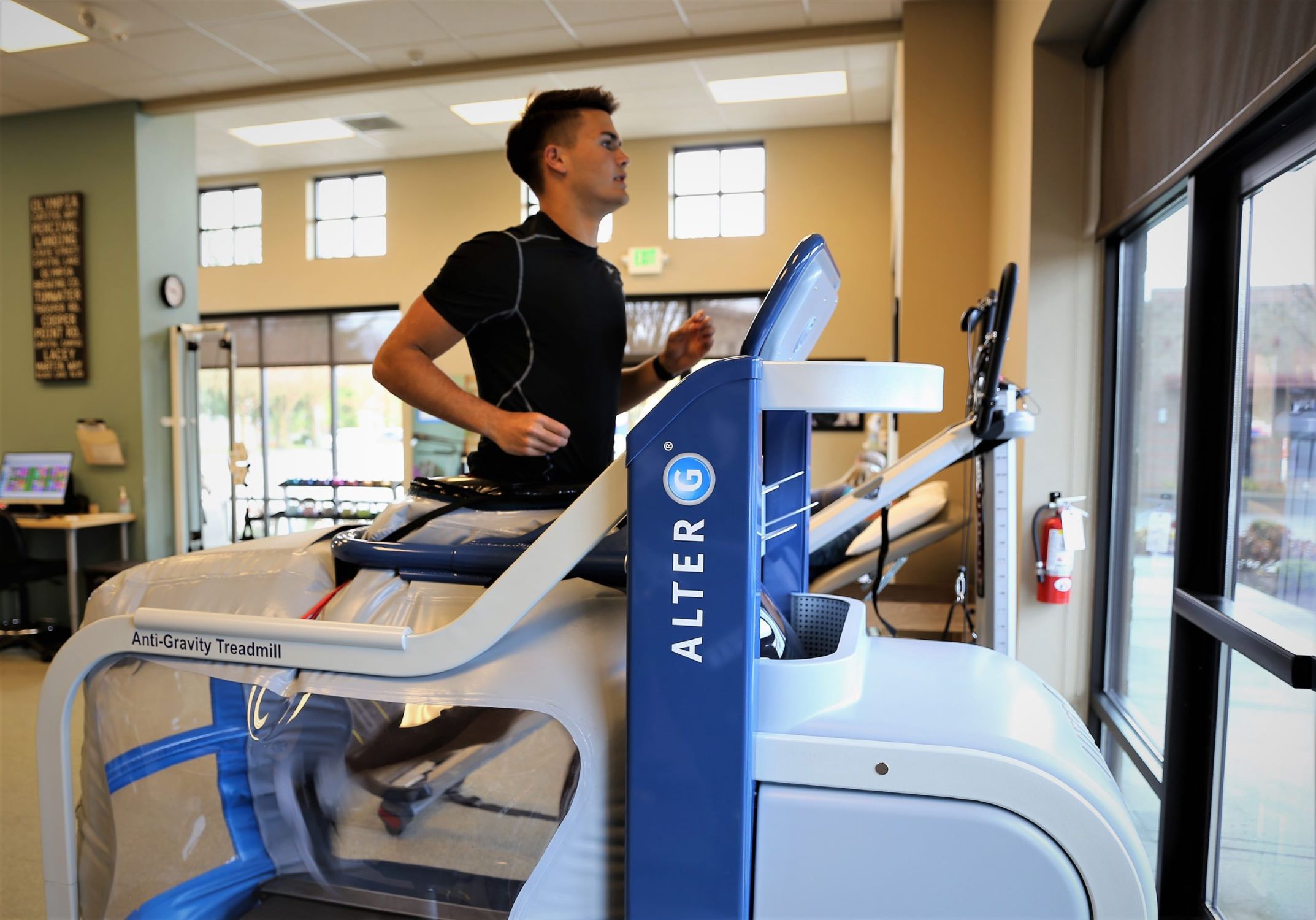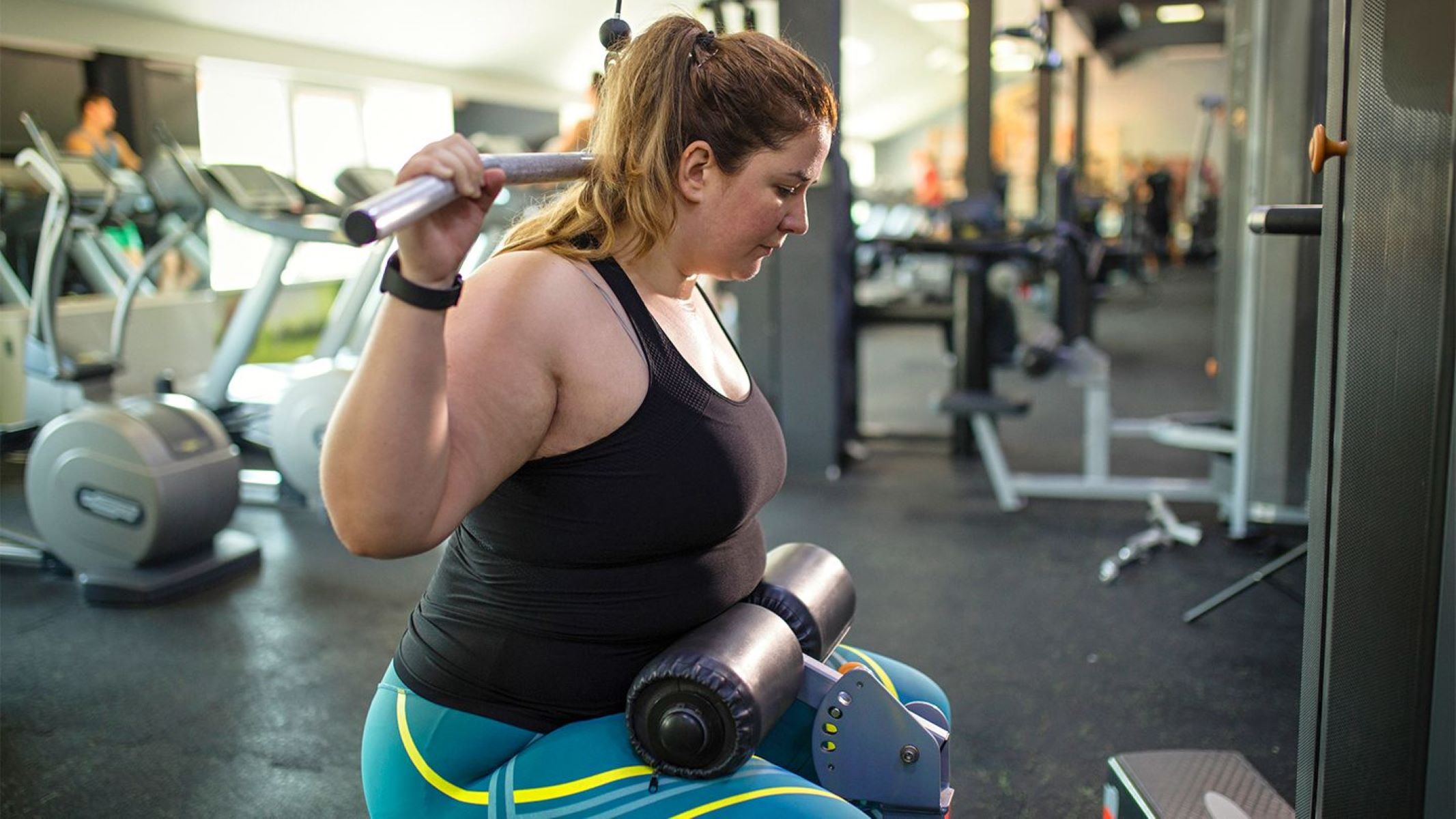Home>Misc>Featured>How To Start Jogging When You Are Overweight


Featured
How To Start Jogging When You Are Overweight
Modified: August 21, 2023
Discover the ultimate guide on how to start jogging when you are overweight. Our featured tips and techniques will help you kickstart your fitness journey today.
Introduction
Starting a jogging routine can be a great way to improve your fitness level and overall health. However, if you are overweight, you may feel hesitant or unsure about where to begin. The good news is that jogging is a versatile and accessible form of exercise that can be tailored to suit your needs and abilities.
Before diving into the benefits and details of how to start jogging when you are overweight, it is crucial to approach this activity with a positive mindset and a realistic understanding of your current fitness level. By doing so, you can set achievable goals and make steady progress towards improving your health and well-being.
In this article, we will explore the benefits of jogging, how to assess your fitness level, choosing the right gear, creating a jogging routine, incorporating warm-up and cool-down exercises, gradually increasing intensity, implementing interval training, setting realistic goals, staying motivated, dealing with challenges and setbacks, and seeking professional guidance.
Remember, the journey to a healthier lifestyle begins with taking the first step. Let’s dive in and discover how you can start jogging when you are overweight.
Benefits of Jogging
Jogging offers a wide range of benefits for individuals of all fitness levels, including those who are overweight. Incorporating regular jogging into your routine can have a positive impact on your physical and mental well-being. Here are some of the key benefits:
- Weight Loss: Jogging is an effective way to burn calories and shed excess weight. It increases your metabolic rate, helping you to maintain a healthy body weight.
- Cardiovascular Health: Jogging is a form of aerobic exercise that strengthens your cardiovascular system. It improves heart health, lowers blood pressure, and reduces the risk of heart diseases.
- Improved Stamina: Regular jogging can gradually improve your endurance and stamina. As you build up your fitness level, you’ll be able to jog for longer periods without feeling as tired.
- Mood Enhancement: Jogging releases endorphins, the feel-good hormones, which can help reduce stress, anxiety, and depression. It boosts your mood and promotes mental well-being.
- Increased Muscle Tone: Jogging engages various muscle groups in your body, including your legs, core, and arms. It helps to tone and strengthen these muscles, giving you a more defined and sculpted physique.
- Bone Health: Jogging is a weight-bearing exercise that helps improve bone density and reduce the risk of osteoporosis. It strengthens your bones, making them more resistant to fractures.
- Improved Sleep: Regular exercise, such as jogging, can improve the quality of your sleep. It helps you fall asleep faster and promotes deep, restful sleep, leading to increased energy levels during the day.
- Increased Energy Levels: Jogging stimulates the circulation of oxygen and nutrients in your body, resulting in increased energy levels and improved overall vitality.
These are just a few of the many benefits of jogging. By incorporating this activity into your life, you can experience significant improvements in your physical fitness, mental well-being, and overall quality of life. So, let’s now explore how to assess your current fitness level before starting your jogging journey.
Assessing Your Current Fitness Level
Before you begin your jogging journey, it’s essential to assess your current fitness level. This evaluation will help you understand your starting point and set realistic goals for your jogging routine. Here are a few ways to assess your fitness level:
Medical Check-Up: It is always recommended to consult with your healthcare professional before starting any new exercise program, especially if you have any pre-existing health conditions or concerns.
Physical Activity Readiness Questionnaire (PAR-Q): The PAR-Q is a simple questionnaire that helps determine whether you are ready to engage in physical activity. It asks about your medical history, current health conditions, and any symptoms you may experience during exercise. If you answer “yes” to any questions, it’s advisable to consult with a healthcare professional before starting your jogging routine.
Resting Heart Rate (RHR): Measure your resting heart rate by counting your pulse for one minute upon waking up. A lower resting heart rate indicates better cardiovascular fitness. A resting heart rate above 100 bpm may suggest that you need additional medical clearance before beginning jogging.
Walking Test: Start by taking a brisk walk for a specific distance, such as 1 mile. Monitor how long it takes you to complete the distance and note how you feel afterward. This will give you a baseline to measure your progress as you incorporate jogging into your routine.
Flexibility and Strength Assessment: Evaluate your flexibility by attempting basic stretches like touching your toes or performing a shoulder stretch. Additionally, assess your upper and lower body strength by attempting exercises such as push-ups or squats. This will help you understand areas that may need improvement as you start your jogging routine.
By assessing your fitness level, you can better understand your starting point and tailor your jogging routine to suit your individual needs. It’s important to remember that everyone is different, and progress will vary from person to person. So, let’s move on to the next step – choosing the right jogging gear.
Choosing the Right Jogging Gear
When starting your jogging journey, it’s crucial to have the right gear to ensure comfort, safety, and optimal performance. Here are some key considerations when choosing your jogging gear:
Footwear: Invest in a good pair of running shoes that provide adequate support and cushioning. Look for shoes that are designed specifically for jogging and your foot type. Proper footwear will help prevent injuries and provide a comfortable running experience.
Apparel: Opt for moisture-wicking and breathable clothing that allows for freedom of movement. Choose lightweight, comfortable materials that will keep you cool and dry during your jog. Dress appropriately for the weather – layer up in colder months, and wear sunscreen and a hat in sunny conditions.
Sports Bra (for women): For female joggers, a supportive sports bra is essential to provide comfort, minimize bounce, and prevent any discomfort or potential damage to breast tissue.
Socks: Select socks made from moisture-wicking materials to prevent blisters and keep your feet dry during your jog. Look for socks with cushioning in the heel and ball of the foot for added comfort.
Accessories: Consider using a running belt or armband to carry essentials such as your phone, keys, or water bottle. Reflective gear and lights can also be essential if jogging early in the morning or at night to enhance your visibility to others.
Technology: If you’re interested in tracking your progress, consider investing in a fitness tracker or smartphone app that can monitor your distance, pace, and calories burned during your jog. This can help you stay motivated and track your improvement over time.
Remember, finding the right gear is key to a comfortable and enjoyable jogging experience. Take the time to research and try out different options to find what works best for you. Now that you have your gear sorted, let’s move on to creating a jogging routine that suits your needs and goals.
Creating a Jogging Routine
Creating a jogging routine is crucial to develop consistency and progress in your fitness journey. Here are some steps to help you create an effective and personalized routine:
Set Realistic Goals: Start by setting specific, attainable goals for your jogging routine. Consider factors such as frequency, duration, and intensity. For instance, you might aim to jog three times a week for 20 minutes initially and gradually increase the time and frequency as you progress.
Choose the Right Time: Determine the best time of day for your jogging sessions. It’s important to choose a time when you feel most energized and when it fits well with your schedule. Some people prefer morning jogs to kickstart their day, while others find evenings more suitable.
Warm-Up and Cool-Down: Prior to each jog, spend a few minutes warming up with dynamic stretches and light exercises to prepare your body for the activity. After your jog, cool-down by performing static stretches to prevent muscle tightness and reduce the risk of injury.
Gradually Increase Intensity: Start with a comfortable pace and gradually increase your jogging intensity over time. This can be done by incorporating intervals of faster running or adding inclines to your route. Listen to your body and avoid overexertion, allowing for proper recovery between sessions.
Vary Your Routes: Explore different routes to keep your jogging routine interesting and enjoyable. Running along scenic paths, parks, or trails can enhance your experience and provide a change of environment. Be mindful of your surroundings and prioritize safety when choosing your routes.
Track Your Progress: Keep a record of your jogging sessions to track your progress and stay motivated. You can use a running app or a journal to note the distance, time, and how you felt during each session. Seeing your improvements over time can be incredibly motivating and help you stay committed to your routine.
Listen to Your Body: Pay attention to any signs of discomfort or pain during your jogging sessions. It’s normal to experience some muscle soreness, but if you feel any sharp or persistent pain, it’s important to rest and seek medical attention if needed. Push yourself, but also know when to dial back and allow for proper recovery.
Remember, creating a jogging routine is all about finding a balance that works for you. It’s okay to start slowly and gradually build up your endurance and intensity. Stay consistent, stay motivated, and enjoy the process of improving your fitness through jogging. Now, let’s explore some warm-up and cool-down exercises to incorporate into your routine.
Warm-Up and Cool-Down Exercises
Before and after each jogging session, it’s important to include warm-up and cool-down exercises to prepare your body for exercise and aid in recovery. Here are some recommended warm-up and cool-down exercises to incorporate into your routine:
Warm-Up:
- Dynamic Stretching: Perform dynamic stretching exercises, such as leg swings, arm circles, and torso twists. Dynamic stretching helps to increase your body temperature, improve flexibility, and prepare your muscles for the upcoming activity.
- Walking or Light Jogging: Start your warm-up with a brisk walk or a light jog for 5-10 minutes. This helps gradually increase your heart rate and loosens up your muscles.
- Active Exercises: Include exercises like jumping jacks, high knees, and butt kicks to further elevate your heart rate and activate your major muscle groups.
- Specific Movements: Incorporate movements that mimic the jogging motion, such as high knee marches or skipping, to further prepare your body for the jogging activity.
Cool-Down:
- Gradual Slowdown: Towards the end of your jog, gradually reduce your pace to a slow jog or brisk walk for a few minutes. This allows your heart rate to gradually decrease and helps prevent blood pooling in your legs.
- Static Stretching: Include static stretching exercises for the major muscle groups used during jogging, such as your calves, quadriceps, hamstrings, and hip flexors. Hold each stretch for 15-30 seconds without bouncing, and remember to breathe deeply and relax into the stretch.
- Foam Rolling: Consider using a foam roller to massage your muscles post-jog. Roll along different areas of your legs, back, and hips to help release tension and promote muscle recovery.
- Hydration and Nutrition: After your cool-down, remember to hydrate with water and consume a nutritious post-workout meal or snack to help replenish your energy stores and support muscle recovery.
By including warm-up and cool-down exercises in your jogging routine, you can minimize the risk of injury, improve flexibility, and enhance your overall performance. Additionally, the cool-down phase allows your body to gradually transition back to a resting state, promoting better recovery. Now that you have learned about warm-up and cool-down exercises, let’s explore how to gradually increase the intensity of your jogging sessions.
Start Slow and Gradually Increase Intensity
When starting a jogging routine, it’s important to begin at a pace and intensity level that suits your current fitness level. Starting slow and gradually increasing the intensity of your workouts will help prevent injuries, build endurance, and ensure long-term success. Here are some tips to help you progress safely:
Beginner’s Pace: Start your jogging sessions at a comfortable pace that allows you to maintain a conversation without feeling overly breathless. This pace may vary for each individual, so listen to your body and find a speed that feels sustainable.
Interval Training: Once you have established a solid foundation, incorporate interval training into your routine. Alternate between periods of jogging at a slightly faster pace and periods of walking or jogging at a slower pace. For example, you might jog for 1-2 minutes, then walk or jog slowly for 1-2 minutes to recover. Gradually increase the duration and intensity of your jogging intervals as you get stronger.
Distance or Time Increments: Instead of trying to jog for a specific distance or time right from the beginning, start with shorter distances or durations and gradually increase them. For example, if you initially jog for 10 minutes, increase it to 12 minutes the following week, and so on. The key is to progress gradually to avoid overwhelming your body.
Rest and Recovery: Allow for adequate rest and recovery days between your jogging sessions, especially when first starting out. Your body needs time to adapt and repair itself from the physical stress of jogging. This will help prevent overuse injuries and keep you motivated for the long run.
Listen to Your Body: Pay attention to any signs of fatigue, excessive soreness, or discomfort during or after your workouts. It’s normal to experience some muscle soreness, but if you feel persistent pain or extreme fatigue, take a break and give your body the rest it needs. Pushing too hard without proper recovery can increase the risk of injuries.
Progress Gradually: Gradually increase the intensity, duration, or frequency of your jogging sessions. Aim to make small, incremental progressions every week or two. This allows your body to adapt and strengthens your fitness foundation without overwhelming your system.
Remember, starting slow and gradually increasing the intensity of your jogging sessions is key to long-term success and injury prevention. Be patient with yourself and celebrate each milestone achieved along the way. Now, let’s explore the benefits of incorporating interval training into your jogging routine.
Incorporating Interval Training
Incorporating interval training into your jogging routine can be a highly effective way to improve your cardiovascular fitness, burn calories, and increase your endurance. Interval training involves alternating between periods of high-intensity jogging and periods of active recovery. Here’s how you can incorporate interval training into your jogging sessions:
Warm-up: Begin with a warm-up consisting of dynamic stretches and a few minutes of light jogging or brisk walking to prepare your body for the upcoming workout.
Jogging Intervals: Choose a distance or a specific duration for your high-intensity jogging intervals. This could be something like 200 meters or 1 minute of jogging at a faster pace. Push yourself to maintain a challenging pace during these intervals, but make sure it’s sustainable for the duration of the interval.
Active Recovery: After each high-intensity interval, switch to a period of active recovery. This can involve walking, jogging at a slower pace, or even performing low-impact exercises like marching in place or doing jumping jacks. The goal is to bring your heart rate down and allow your muscles to recover before the next interval.
Repeat the Cycle: Continue alternating between jogging intervals and active recovery periods for the desired number of repetitions. Start with a ratio of 1:1 (equal time or distance for jogging and recovery) and gradually increase the intensity by reducing the time or distance of the recovery period in comparison to the jogging interval. For example, you can progress to a ratio of 2:1 or 3:1.
Cool-Down: Finish your interval training session with a cool-down period. This can involve 5-10 minutes of light jogging or brisk walking, followed by static stretches to release tension in your muscles.
Incorporating interval training into your jogging routine provides several benefits. It helps improve your cardiovascular endurance, increase your speed, and burn more calories compared to steady-state jogging. Additionally, interval training can also prevent boredom by keeping your workouts dynamic and engaging.
Remember, interval training places stress on your body, so it’s important to listen to your body’s signals and progress at a pace that feels manageable. Start with just a few intervals and gradually increase the number and intensity as your fitness improves. This type of training can be challenging, but it can also be immensely rewarding as you witness your progress and see improvements in your jogging performance.
Now that you have a better understanding of interval training, let’s move on to the next section – setting realistic goals for your jogging journey.
Setting Realistic Goals
Setting realistic goals is essential in order to stay motivated and make progress in your jogging journey. When establishing your goals, it’s important to be specific, measurable, attainable, relevant, and time-bound (SMART). Here are some tips for setting realistic goals:
Be Specific: Clearly define what you want to achieve in your jogging routine. Instead of simply aiming to “improve,” set specific goals like running a certain distance, completing a race, or jogging a specific number of days per week.
Make them Measurable: Set goals that can be objectively measured and tracked. Whether it’s monitoring the distance you jog, the time it takes, or the number of jogging sessions completed per week, having tangible measurements allows you to track progress and celebrate milestones along the way.
Ensure they are Attainable: Set goals that are within your current capabilities and can be achieved with effort and dedication. Consider your current fitness level, schedule, and any potential limitations. Gradually increasing your goals over time can help ensure they are manageable and within reach.
Keep them Relevant: Align your goals with your personal motivations and aspirations. Whether you’re jogging for weight loss, improved cardiovascular health, or to participate in a specific event, make sure your goals align with your individual desires and values.
Time-Bound: Set a timeframe for achieving your goals. This adds a sense of urgency and helps you stay focused. Break down larger goals into smaller milestones, providing you with a sense of accomplishment as you progress.
Track your Progress: Regularly assess and track your progress towards your goals. This can be done using a fitness app, a journal, or simply by keeping a record of your jogging performance. Seeing your progress in black and white can be highly motivating and encourage you to continue pushing forward.
Adjust as Needed: Be flexible and open to adjusting your goals as you progress or encounter obstacles. Life happens, and it’s important to adapt your goals to changing circumstances. Be kind to yourself and make necessary adjustments without losing sight of your overall vision.
Remember, setting realistic goals is crucial for maintaining motivation and measuring progress in your jogging journey. Celebrate each achievement along the way and don’t underestimate the power of small steps forward. Now, let’s explore some tips for staying motivated as you continue with your jogging routine.
Staying Motivated
Staying motivated is key to maintaining a consistent jogging routine and achieving your goals. Here are some tips to help you stay motivated throughout your fitness journey:
Set Realistic and Achievable Goals: Set goals that challenge you, but are attainable. Break down larger goals into smaller milestones so you can celebrate your progress along the way.
Keep Track of Your Progress: Track your workouts, distance, time, and any improvements you see over time. Seeing your progress in concrete terms can be highly motivating and help you stay focused on your goals.
Vary Your Routes: Explore different jogging routes to keep your routine fresh and exciting. Discovering new areas or running trails can provide a change of scenery and keep you motivated to lace up your shoes and get outside.
Find a Running Buddy: Consider finding a jogging partner or joining a running group. The support and camaraderie of running with others can make your workouts more enjoyable and provide accountability.
Reward Yourself: Celebrate your accomplishments by treating yourself to small rewards when you reach certain milestones. It could be a new piece of running gear, a massage, or a healthy post-run snack.
Create a Playlist or Podcast Playlist: Curate a playlist of energizing songs or listen to a podcast that inspires and motivates you. The right music or podcast can provide a motivational boost and make your jogging sessions more enjoyable.
Visualize Your Success: Take a few minutes each day to visualize yourself accomplishing your jogging goals. Imagine what it feels like to cross the finish line, hit a personal best, or achieve any other goal you have set for yourself.
Join Virtual Challenges or Races: Participate in virtual challenges or races to add an element of competition and motivation. These events can provide a sense of community and achievement, even if they’re done remotely.
Mix Up Your Workouts: Incorporate cross-training exercises or try different forms of cardio to keep your workouts interesting. Adding variety to your routine can prevent monotony and keep you engaged.
Focus on the Benefits: Keep in mind the many benefits of jogging, such as improved cardiovascular health, weight management, enhanced mood, and increased energy levels. Remind yourself of these benefits when motivation is waning.
Practice Self-Compassion: Be kind to yourself and don’t be too hard on yourself if you miss a workout or have a setback. Remember that progress is not always linear, and every step, no matter how small, is a step forward.
Remember, motivation may ebb and flow, but incorporating strategies to stay inspired can help keep you on track with your jogging routine. Find what works for you and embrace the journey towards a healthier and fitter you. Now, let’s explore how to deal with challenges and setbacks along the way.
Dealing with Challenges and Setbacks
Challenges and setbacks are a natural part of any fitness journey, including jogging. Here are some strategies to help you navigate through obstacles and stay on track:
Acceptance and Positive Mindset: Acknowledge that setbacks and challenges are normal and part of the process. Embrace a positive mindset that allows you to learn from setbacks and stay focused on your long-term goals.
Listen to Your Body: Pay attention to any signs of fatigue, pain, or injury. Pushing through when your body needs rest can lead to worsened injuries. Take necessary breaks and seek medical advice if needed.
Modify Your Goals: If you encounter a significant setback or face challenges that impact your jogging routine, consider adjusting your goals temporarily. This might involve decreasing the intensity, frequency, or duration of your workouts until you can gradually build them back up.
Explore Alternative Activities: If circumstances prevent you from jogging temporarily, find alternative activities that keep you active and maintain your fitness level. This could include cycling, swimming, or strength training exercises that don’t aggravate any existing injuries.
Seek Support: Reach out to friends, family, or a running community for support during challenging times. They can provide encouragement, advice, and help you stay motivated when things get tough.
Reassess and Adjust: Reflect on the factors contributing to the challenge or setback. Identify areas where you can make adjustments, such as scheduling, time management, or seeking professional guidance, to better navigate future hurdles.
Break it down: If you’re feeling overwhelmed or struggling to regain momentum, break your goals down into smaller, more manageable tasks. Focus on achieving those smaller tasks one by one, celebrating each achievement along the way.
Remember Your Why: Reconnect with your initial motivations for starting your jogging routine. Reminding yourself of the reasons why you wanted to improve your fitness and overall health can reignite your determination and help you overcome challenges.
Celebrate Your Progress: Take time to celebrate the progress you’ve made, no matter how small. Recognize the effort you’ve put in and the milestones you’ve achieved along your jogging journey. Celebrating success boosts your confidence and motivates you to keep going.
Be Patient: Rome wasn’t built in a day, and reaching your jogging goals will take time. Practice patience with yourself and trust in the process. Remember that progress is not always linear, and setbacks can sometimes serve as valuable learning opportunities.
Remember, challenges and setbacks are part of the journey towards achieving your jogging goals. Embrace them as opportunities for growth and resilience, and let them fuel your determination to keep moving forward. Now, let’s explore how seeking professional guidance can further enhance your jogging experience.
Seeking Professional Guidance
Seeking professional guidance can greatly enhance your jogging experience and help you achieve your fitness goals. Whether you’re a beginner or an experienced jogger, working with a professional can provide valuable insights, personalized advice, and accountability. Here are some examples of professionals you may consider consulting:
Personal Trainer: A certified personal trainer with experience in working with runners can provide a customized jogging plan tailored to your specific needs and goals. They can guide you on proper form, technique, and progression, helping you avoid injuries and maximize your performance.
Running Coach: A running coach can provide expert guidance and support, whether you are training for a specific event or looking to improve your overall running abilities. They can help structure your training plan, provide feedback on your form and technique, and assist with creating race strategies.
Sports Medicine Professional: If you have any underlying health concerns, past injuries, or recurring joint pain, consulting with a sports medicine professional, such as a physical therapist or sports physician, can help address these issues. They can provide exercises to strengthen specific areas, develop a tailored rehabilitation plan, and offer guidance on injury prevention.
Dietitian/Nutritionist: Proper nutrition plays a vital role in supporting your jogging routine and overall health. A registered dietitian or nutritionist can help you develop a nutrition plan that fuels your workouts, aids in recovery, and supports your specific goals, such as weight loss or muscle gain.
Podiatrist: If you experience foot pain, recurring blisters, or discomfort while jogging, consulting with a podiatrist can be beneficial. They can assess your foot structure, provide recommendations for proper footwear, orthotics, or exercises to address any foot-related issues.
Physiotherapist: If you’re recovering from an injury or dealing with persistent pain, a physiotherapist can help guide your rehabilitation and develop exercises to improve strength, flexibility, and mobility. They can also provide manual therapy techniques to aid in your recovery.
Mental Health Professional: Jogging can have a positive impact on mental health, but if you’re struggling with motivation, self-doubt, or other mental health concerns, seeking support from a mental health professional can be beneficial. They can provide strategies to overcome mental barriers and help you develop a positive mindset towards your jogging journey.
Remember, professionals have the knowledge and expertise to guide you in a safe and effective manner. They can provide personalized advice based on your unique circumstances and help you reach your jogging goals while preventing injuries and optimizing your performance. Don’t hesitate to seek professional guidance to take your jogging experience to the next level.
Now that we’ve explored the benefits of seeking professional guidance, let’s wrap up our article and summarize the key takeaways.
Conclusion
Starting a jogging routine when you are overweight can be a transformative journey towards improving your fitness, health, and overall well-being. By following the steps outlined in this article, including assessing your current fitness level, choosing the right gear, creating a jogging routine, incorporating warm-up and cool-down exercises, gradually increasing intensity, setting realistic goals, staying motivated, dealing with challenges and setbacks, and seeking professional guidance, you can embark on a successful and fulfilling jogging journey.
Remember to start slow and gradually increase the intensity, listen to your body, and adjust as needed. Celebrate your progress, no matter how small, and maintain a positive mindset throughout your jogging routine. Seek support from others, whether it’s through running groups, professional guidance, or the encouragement of friends and family. And above all, enjoy the process. Jogging is not just about achieving a specific goal; it’s an opportunity to embrace a healthier and more active lifestyle.
So, lace up your running shoes, hit the pavement, and experience the countless physical, mental, and emotional benefits that jogging can bring. With commitment, perseverance, and the knowledge gained from this article, you have the tools to succeed in your jogging journey. Get ready to unlock the joys and rewards of jogging, and embrace the transformation that awaits you on the path ahead.









